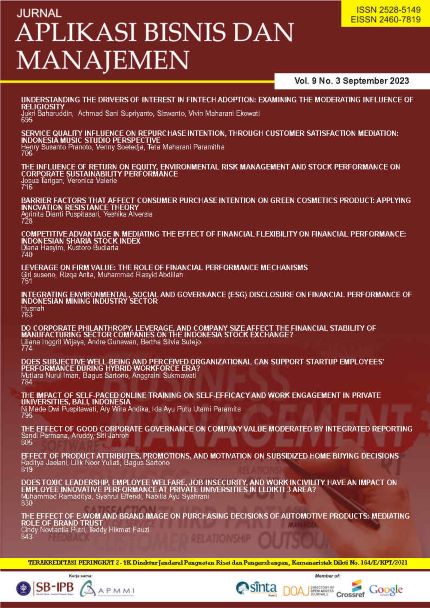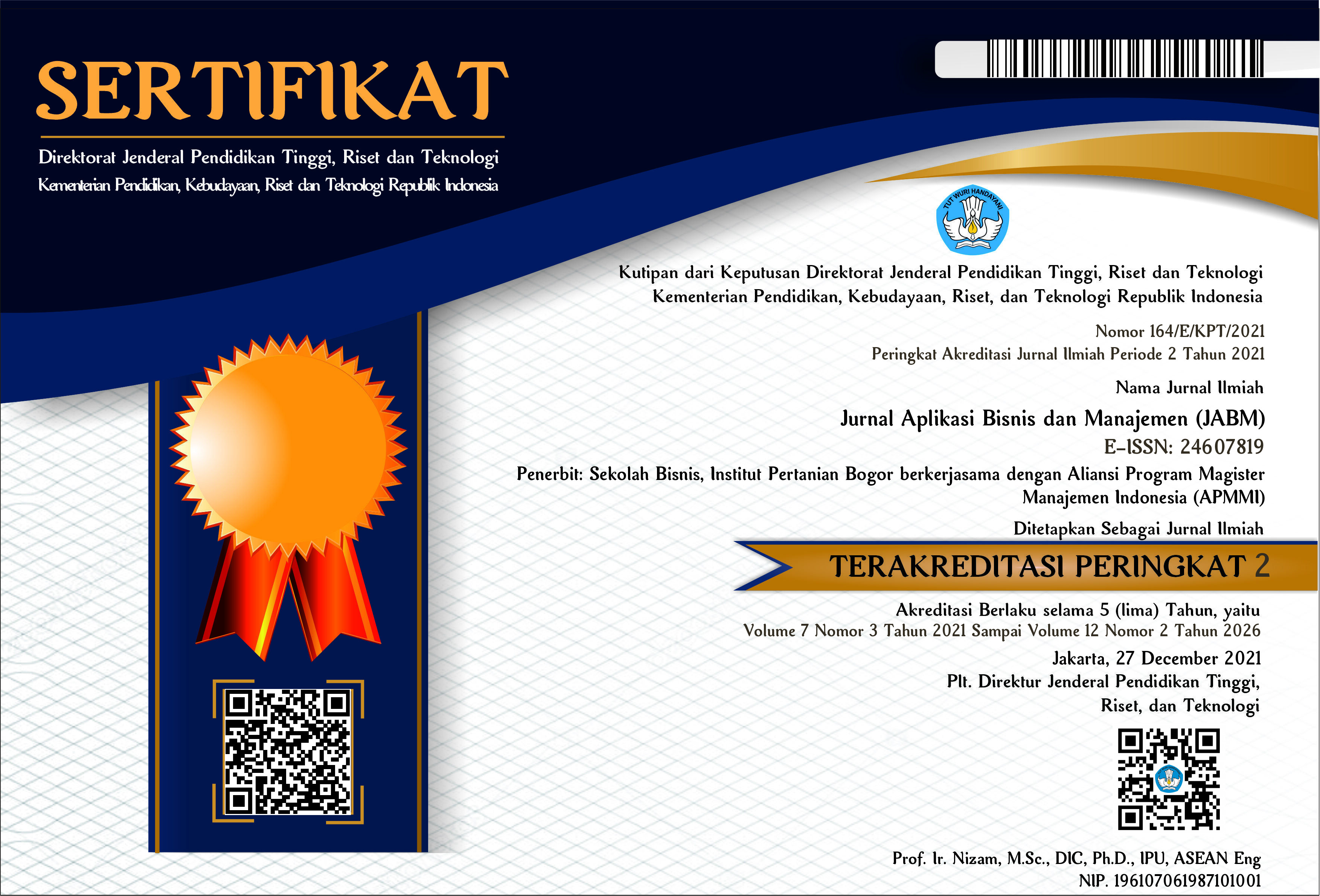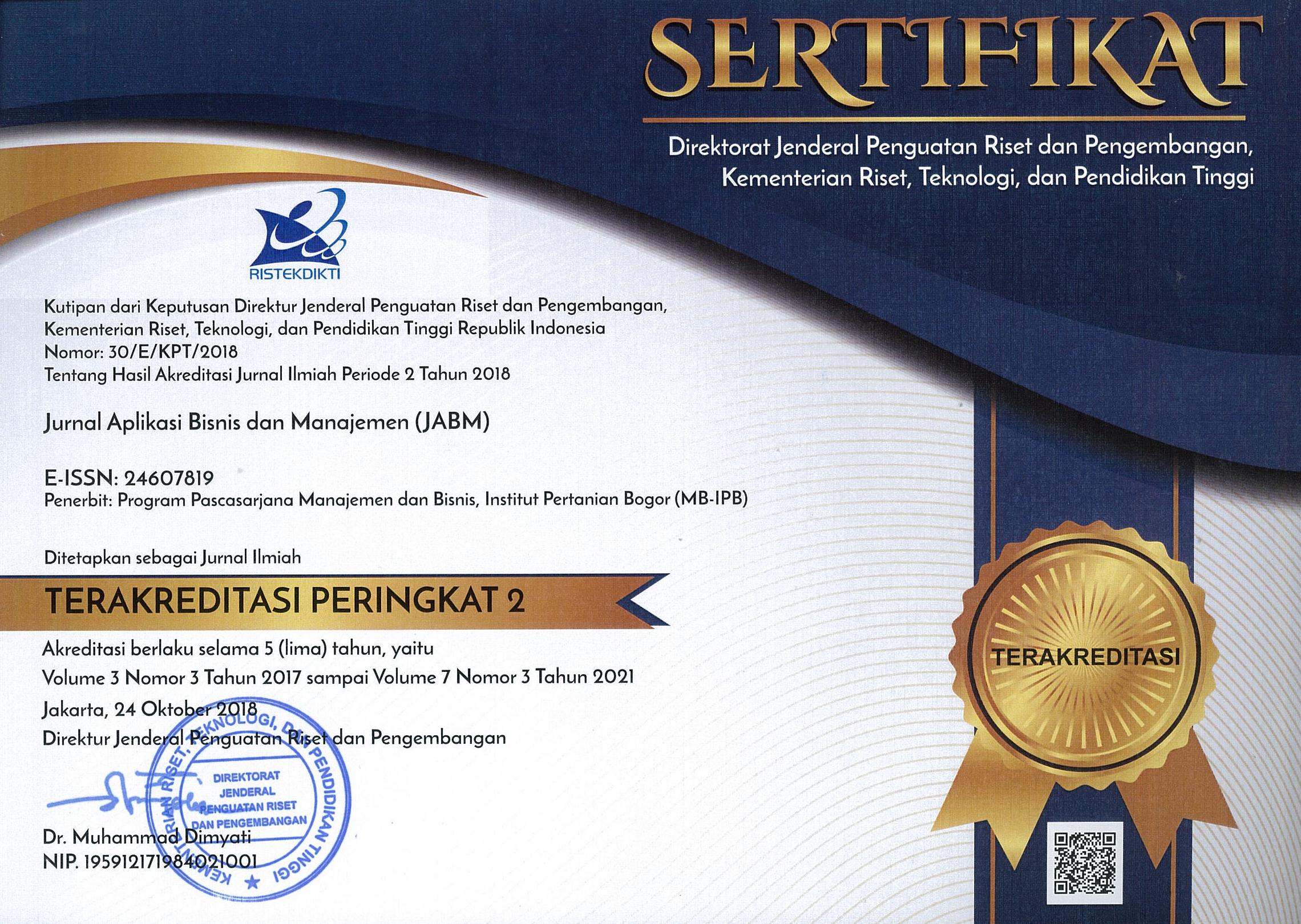Integrating Environmental, Social and Governance (ESG) Disclosure on Financial Performance of Indonesian Mining Industry Sector
Abstract
The objective of this research is to examine the disclosure of Environmental, Social, and Governance (ESG) in the mining sector of Indonesia to analyze its impact on financial performance. The ESG index disclosed on Indonesia Stock Exchange is used to proxy ESG measurement, and three measures, namely Return on Assets, Tobin's Q, and Sales Growth based on the Global Reporting Initiative, are used to evaluate financial performance. The study includes 19 companies in the mining industry that are listed on the Indonesian Stock Exchange for the years 2020-2021. Multiple Regression Analysis is applied as the analytical method with SPSS software. The findings suggest that ESG disclosure has a concurrent effect on financial performance, as proxied by Tobin's Q and Sales Growth in the Indonesian mining industry. However, in the short run, ESG disclosure has not shown an impact on Return on Asset. Additionally, the partial testing has revealed that environmental and governance results have a positive influence on Tobin's Q, while environmental, social, and governance has been found to enhance sales growth. These results suggest that the mining industry in Indonesia can improve its financial performance by incorporating ESG factors into its operations, which can positively impact the company's stock value and sales growth. It is recommended that mining companies should consider adopting ESG practices and disclosing their ESG scores to demonstrate their commitment to environmental and social responsibility, and governance.
Keywords: ESG Disclosure, investment, financial performance, mining industry, Global Reporting Initiative








